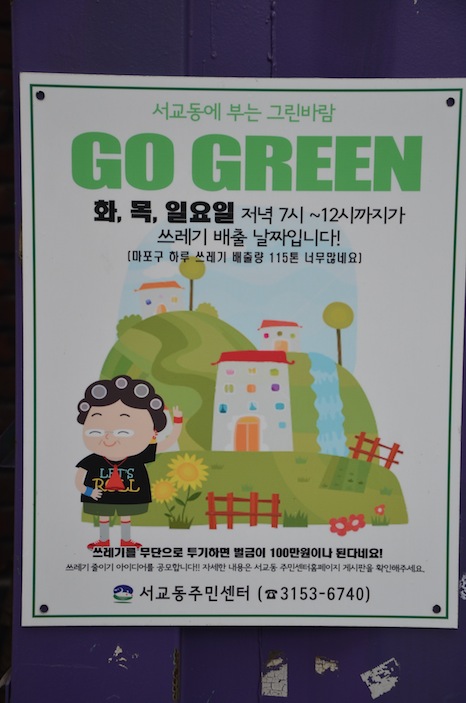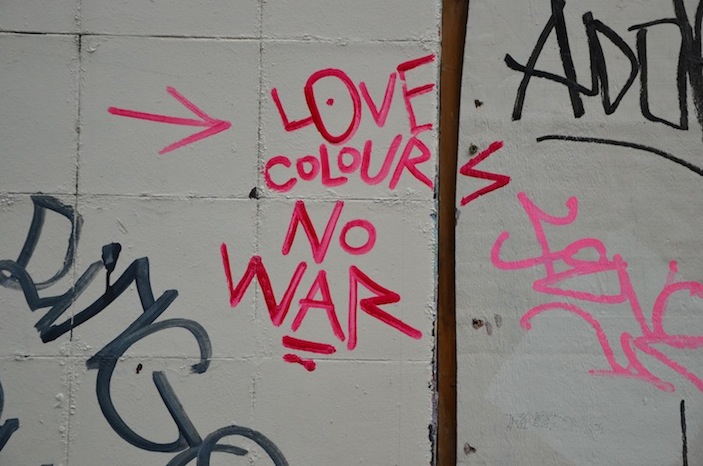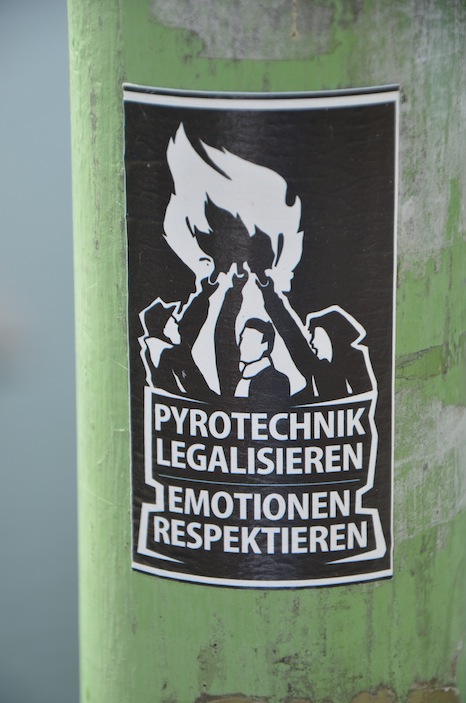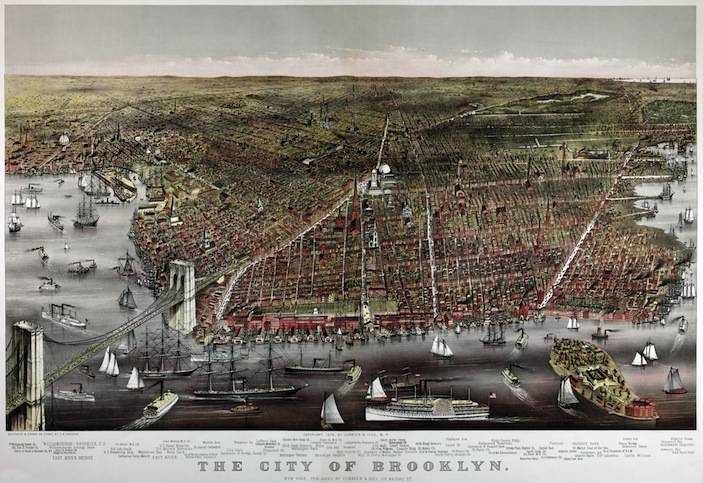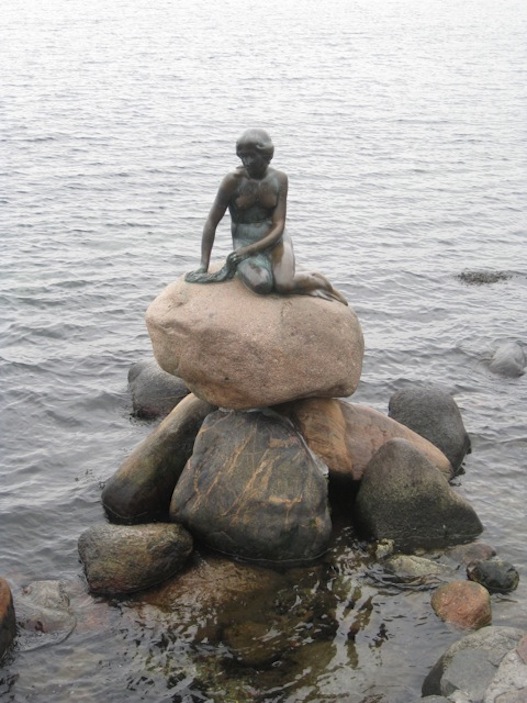IDlondon: Love Colours No War!
IDheidelberg: Legalize Fire!
American Teacher Exposes Lingering Racism in Japan
Today’s post is in support of our friend Miki Dezaki, a Japanese-American currently living and teaching in Japan. Miki has been in Okinawa since 2007, and has made some videos documenting various elements of Japanese culture from his unique perspective (usually with a humorous kick).
Recently, he made a video chronicling the racism that exists in Japan even today, and how the Japanese themselves are mostly oblivious to it. While the video is in fact a thoughtful analysis rooted in fact and supporting evidence, Miki did not expect that the video would cause the stir that it did, in this case, from the loud, vocal and right-wing netouyou.
Some extremists from this group were so outraged that they began hurling death threats at Miki, and attacking him through his various social media presences online. Armed with the information they could find there, they infiltrated his personal life, tracking down his superiors at school, the school board, and even local government to demand that he remove the video and stop spreading his message. Ironically, that fact alone seems to reaffirm Miki’s original “controversial” claim that racism does still exist in Japan.
“Some Japanese guys found out which school I used to work at and now, I am being pressured to take down the ‘Racism in Japan’ video,” Dezaki posted on Reddit. “I’m not really sure what to do at this point. I don’t want to take down the video because I don’t believe I did anything wrong, and I don’t believe in giving into bullies who try to censor every taboo topic in Japan. What do you guys think?”
You can read more about Miki and his video in a recent Washington Post article here. In the meantime, we at Initial Descent want to express our support for Miki and wish him well as he continues to try to make the country he loves a better place through education.
You can also watch the original video that caused this stir below:
He has also released a follow-up, which can be accessed here.
IDelsalvador: Keeping the Peace Among the Gangs
A few years ago, I read about a girl that I knew from high school who went to meet some friends at a hotel room in our middle-class suburb of Washington, D.C. Hours later, she was dead and dumped in a forest two hours away, a victim of the most violent, intimidating gang around: MS-13.
Mara Salvatrucha-13, or MS-13 for short, is a gang built on violence and intimidation. Rooted in El Salvador, the gang has a significant presence in the United States as well, with Los Angeles in particular being a huge breeding ground. But MS-13 terrorizes its home country the most, with its ongoing territory battle with rival gang Barrio 18 being responsible for El Salvador’s status as having the second highest murder rate in the world.
One year ago today, MS-13 and Barrio 18 agreed to a truce. Surprisingly, the truce is still in place today, and the country’s murder rate has dropped an astounding 67 percent. From a high of between 13 and 14 murders a day, the country is now dealing with about 5—still a number not in line with peace and harmony, but certainly a vast improvement.
It is believed the truce was facilitated by a Catholic bishop—something to be expected in this predominantly Catholic country—and a former rebel commander of left-wing guerillas who battled El Salvador’s military during the country’s civil war some 30 years ago. The negotiations took place among rival gang leaders in some of the nation’s prisons, which are swollen in many cases to five times their capacity.
While El Salvador’s Minister for Justice and Security is credited with the arrangement (though he denies involvement), many people are skeptical, believing that the gangs have either been paid off by the government or strongly influenced by just as violent gangs from Mexico who depend on MS-13 and Barrio 18 for getting their drug supplies through Central America. But all parties involved insist neither is true, and that the gangs’ leaders have come to the realization that the body count has simply gotten out of hand.
What’s important for now though is that the murder rate is down, and if the trend continues, it could go a long way into helping El Salvador reach its potential as a growth economy and a desirable place to visit. And more importantly, a place where the country’s children can play outside without the sound of gunshots ringing.
IDbarcelona: More Than a Club
They certainly make Barcelona natives proud for their exploits on the pitch: FC Barcelona has long cemented its reputation as one of the greatest football clubs in the history of the sport. Today, they are widely regarded as the best team in the world. But part of what makes this club so iconic, and its rivalry with Real Madrid the most publicized in the world, is that unlike other iconic sports clubs, the ramifications of this clubs results stretch far beyond the pitch.
If you take a look back through Spain’s political history, you’ll see that nearly every idea that shaped the country’s identity—at various times republicanism, federalism, anarchism, syndicalism and communism—were introduced via Catalonia, of which Barcelona is the capital.
In the middle of the 20th century, thanks to the dictatorships of Miguel Primo de Rivera and Francisco Franco, regional pride within the Spanish borders was restrained. This hit hard in Catalonia, which has always found pride in its linguistic dialect and its own identity, so strong that there have always been and are still today frequent calls for its secession from Spain. Because FC Barcelona at the time represented progressive beliefs, and took on the wider role of representing Catalonia as a whole, the club gained the motto més que un club (“more than a club”) during this time—a motto that continues to thrive today.
IDnyc: Brooklyn’s Humble Origins
So yeah, you’ve been to Brooklyn. Good for you. You got hyped up the first time you could tell your hip hop friends you saw where Jay-Z grew up. Or the first time you told your hipster friends you found your apartment in “East Williamsburg”…a.k.a. Bushwick. And the first time you told your baller friends that you shot hoops on Coney Island. But how many of you know anything of the origins of the place that’s pretty much synonymous with “cool” in popular culture today?
Welcome to Brookly—err—I mean, Breuckelen!
Yes, that’s right. The original Brooklyn was called exactly that, named after a small town in the Netherlands called Breukelen. Of course as with all of America, the land that the first Dutch settlers took over as their home was originally occupied by Indians—the Lenape tribe. But, as with most of this country’s history, we seem to choose to ignore them (I often wonder is it that we just don’t’ have any lasting records of their culture or we just don’t care to find and publicize them?).
Getting back to the Dutch colonization, Brooklyn’s first settlement was Gravesend (named after Gravenzande, Netherlands), which existed before there was even anything known as Brooklyn. The following year this was replaced by Brooklyn (which was in fact spelled “Breuckelen” back then), and within the next few decades, more of today’s neighborhoods started to be born—Flatbush, New Utrecht, Bushwick, and so on.
Brooklyn was actually an official town before the capital of the new colony across the river—New Amsterdam—which I’m sure you can deduce would become Manhattan. It wasn’t until the early 1800s that the urbanization of Brooklyn began, with the area that is today considered Downtown Brooklyn, immediately across the East River from Lower Manhattan. With reliable steam ferry service, Brooklyn Heights became a commuter town for Wall Street. Around the same time, the independent towns of Bushwick and Williamsburg were growing faster than they could handle, and thus they were soon incorporated into Brooklyn.
For most of that century, Brooklyn was an independently thriving seaport and manufacturing center, considered a twin city to Manhattan. They did not merge into what is today New York City until 1898.
Election to Address Italy’s Culture of Machismo? Apparently Not…
Everyone knows about Italy’s male chauvinist reputation. Whether it is justified or not, every girl who mentions a plan to visit Italy will hear the same advice from those around her: Be careful around the aggressive men.
Having spent enough time here, I know it is pretty much harmless–lots of hooting and hollering but very rarely physical action. So while you may not have to worry for your safety, you, attractive woman, will have to accept being looked at like a juicy, t-bone steak.
So goes the reputation, anyway–a reputation that Italy has been trying to shake off for some time now.
And re-electing Silvio Berlusconi as Prime Minister for a fourth time in this month’s election (24-25 February) will not be the way to do that. Could you imagine Berlusconi even having so much as a chance to be elected in a place like politically-correct America?
If I recall correctly, Bill Clinton was nearly impeached from office for having an affair with a legal adult, despite his excellent track record in doing his job.
Yet, Mr. Berlusconi has closed the gap with the current frontrunner, Pier Luigi Bersani, and still has a shot to win the election (see Reuters article on the latest news here).
Let’s recall a couple of Silvio’s greatest examples of chauvinist buffonery:
- In the run-up to the 2008 Italian general election, Berlusconi said that female politicians from the right were “more beautiful” and that “the left has no taste, even when it comes to women.” It should be noted that he won the election.
- Around the same time, he criticized the composition of Spain’s Council of Ministers as being too “pink” because it was composed of an equal number of men and women.
- He compounded those comments by saying that Spain’s composition would be impossible in Italy, given the “prevalence of men” in Italian politics.
- And finally, let’s not forget the fact that he paid a 17-year-old girl an alleged $65,000 in 2010 so that she “would not have to become a prostitute.” Berlusconi was 73 years old at the time. And it should also be noted that he had sex with the girl. (Does this somehow not fall into the category of “prostitution” in Italy?)

Old Silvio and the 17-year-old girl he paid (for sex) “so she would not have to become a prostitute” (photo credit: telegraph.co.uk)
It will be interesting to see if he is elected yet again, in which case, the movement for gender equality in Italy will be set back a decade or two yet again.
IDcopenhagen: The History of The Little Mermaid Statue
It is hard to believe that of all Denmark is known for and renowned for around the world, one of its most famous associations is with a bronze statue just over one meter tall. Yet The Little Mermaid statue, based on the Hans Christian Andersen fairy tale, has become synonymous with Copenhagen in the 100 years since it was first constructed in 1913.
The statue rests on a rock a few meters into Copenhagen’s harbour, just off the picturesque Langelinie Promenade. First unveiled on August 23, 1913, there it has remained with the exception of a six-month period in 2010, when the Copenhagen City Council decided (quizzically) to move the statue to Danish Pavilion at Expo 2010 in Shanghai. It was originally commissioned by Carl Jacobsen (son of the founder of Carlsberg), who was fascinated by a ballet about The Little Mermaid in Copenhagen’s Royal Theatre. Edvard Eriksen was the sculptor, with Prima ballerina Ellen Price modeling for hi. But when she would not agree to model nude, his wife Eline stepped in.
The statue has become a mecca of sorts for political activists and vandals, prompting the city to consider moving it further into the harbour. We have compiled a list of the most memorable happenings involving The Little Mermaid over the past half-century:
- April 24, 1964: The Mermaid’s head is sawn off and stolen by politically-oriented activists of the Situationist movement. It was never recovered, and a new head was produced.
- July 22, 1984: The statue’s right arm is sawn off, and returned two days later by two men.
- August 5, 1990: Another attempt is made to saw off the head, unsuccessfully. An 18cm cut is left in the neck.
- January 6, 1998: The statue is again decapitated, with the head being returned anonymously to a local television station and re-attached on February 4th.
- September 10, 2003: The statue is knocked off its base with explosives, and is later recovered in the harbour with holes in the Mermaid’s knee and wrist.
- December 16, 2004: The Mermaid is dressed in a burqa as a statement against Turkey joining the European Union.
- March 8, 2006: A dildo is attached to the Mermaid’s hand, green paint is dumped all over it, and the words “March 8” are written on her. March 8th is International Women’s Day.
- May 20, 2007: She is again draped in a Muslim dress and head scarf.
Which do you think is most creative?
Malaysia’s Green Movement
On a recent visit to the Sarawak Museum, I was sadly amused to see an entire portion of the museum sponsored by Shell Oil Company, with an entire exhibit dedicated to showing how Shell’s oil-related activities are an integral part of Sarawak’s history. I found it ironic, given that if Shell had its druthers, there would be no Sarawak–simply a massive Shell-owned oil field.
With a government that seems intent upon cashing in on its oil-related potential (Petronas is a government-owned oil company that ranks among the largest companies in the world), I’m interested in learning more about the people’s movement to oppose the exploitation of Malaysia’s natural beauty by big industry. I found this New York Times article from last year, and wanted to share it.
(from the New York Times; 19 June 2012; By Liz Gooch)
KUALA LUMPUR — When a planned 24-hour environmental protest gets under way this Saturday on the outskirts of the coastal Malaysian town of Kuantan, the roll call will include speakers from across the country.
While the catalyst for the rally is the construction of a rare earth refinery nearby — the target of a sustained campaign by local residents and environmental groups — the crowd is also expected to hear from people from other parts of Malaysia who are concerned about projects near their homes that they fear could be damaging the environment.
Among them will be residents of a fishing village near an oil and gas plant in the southern state of Johor; people from Perak State who are worried about the potential effects of an iron ore refinery on a mangrove forest; and villagers from Pahang State who are concerned about possible pollution from a gold mine, according to Wong Tack, chairman of the group behind the protest, Himpunan Hijau, which means “Green Assembly” in Malay.
Himpunan Hijau is hoping to draw attention to these projects by taking advantage of the momentum of the campaign against the rare earth refinery being built by the Australian mining company Lynas, which has prompted thousands to join protests and invigorated the country’s environmental movement.
Malaysia, a nation rich in biodiversity, has often attracted the wrath of environmental groups concerned about issues like illegal logging and the loss of habitat for the endangered orangutan.
While some local groups have been active for decades, many of the fiercest campaigns have come from foreign organizations, and analysts say few projects or industries have galvanized homegrown environmentalists the way the Lynas refinery near Kuantan appears to have done.
“The kind of protests, the kind of activism that we see for the Lynas plant is something unprecedented,” said Khoo Kay Peng, a management consultant and policy analyst.
Others say the rising level of awareness in Malaysia may mean that companies engaged in industries or activities deemed potentially hazardous to the environment are likely to face greater oversight. “Foreign businesses involved in projects that could damage the environment — such as mining, logging or exploration — are liable to encounter scrutiny from local environmental groups and government sources,” said Maria Patrikainen, a Southeast Asia analyst at the consulting institution IHS. She added that the government was likely to become increasingly sensitive to the concerns of environmental groups, particularly before elections that are widely expected to be held later this year.
The campaign against the rare earth plant began in earnest in March 2011, when some Kuantan residents established a group, Save Malaysia Stop Lynas, to voice their concerns that the plant could produce harmful radiation, a claim vigorously denied by Lynas.
Environmental organizations swiftly rallied around the residents’ group, helping to organize protests, send petitions to the government and issue statements in support, said Tan Bun Teet, chairman of Save Malaysia Stop Lynas.
Himpunan Hijau provides an example of how this movement has grown. The group was formed last September, initially to help organize the campaign against the rare earth refinery, but it is now also helping residents in other states lobby against projects they consider a threat to the environment. Among them are people on the island of Penang who are concerned about housing developments encroaching on coastal areas and hillsides.
“We garner the people’s power,” said Mr. Wong, the chairman, describing the group as a “grass-roots people’s movement.”
Rare earth metals are found in nature with radioactive contaminants that must be separated and disposed of during refining.
Lynas says that the waste produced in this process will be well within levels considered safe and that the plant has been subject to “a thorough and lengthy regulatory review” to ensure that it meets the highest international safety standards.
On Tuesday, a parliamentary committee appeared to agree with the company, releasing a report concluding that a license should be issued to Lynas because it had fulfilled legal provisions and standards more stringent than international standards and that it had provided the necessary systems to ensure public health, safety and environmental protection.
The panel’s report made 31 recommendations, among them that Lynas and the Atomic Energy Licensing Board continuously monitor radiation levels, which it noted would be “low and safe.”
Lynas said the findings of the parliamentary panel were “yet another affirmation of the science” behind its plant and its safety features, according to a report by The Associated Press.
“We look forward to the issuance of the temporary operating license so we can demonstrate that safety to the Malaysian community,” the company said in a statement to the news agency.
The parliamentary report followed a government decision Friday to reject an appeal by activists against awarding a temporary operating license to Lynas. Maximus Ongkili, the minister of science, technology and innovation, ruled that there was “no strong justification nor scientific or technical basis” to set aside the decision to grant Lynas the license, according to a statement released by the ministry.
Save Malaysia Stop Lynas said it would appeal the minister’s decision.
In a separate development that could complicate the debate in Malaysia, the Chinese government scheduled a news conference in Beijing on Wednesday to unveil its new plan for the country’s rare earth industry, including an extensive cleanup of environmental damage already done.
The new Lynas plant, estimated to cost 2.5 billion ringgit, or nearly $800 million, is expected to weaken China’s dominance of the production of rare earths, which are used in a range of high-technology products including smartphones, electric cars and military equipment.
Lynas has started defamation proceedings against Save Malaysia Stop Lynas, and said in a statement released after a demonstration in April that while it respected the right of people to engage in peaceful protest, it did not accept that such a right extended to “a serious campaign of misinformation which creates unnecessary anxiety and fear in the community.”
Analysts say that the issue has become highly politicized, with the opposition, which refused to take part in the parliamentary panel, playing a leading role in the campaign against the plant. Environmentalists also point out that part of the reason why the Lynas plant has provoked such a divisive response is that Malaysians’ experience of rare earth projects has been shaped by another refinery near Bukit Merah, owned by Mitsubishi Chemical.
Local residents there have blamed the plant, which the company closed in 1992, for birth defects and a number of leukemia cases.
The Malaysian government already requires companies to submit environmental impact assessments before projects are approved.
Deputy Prime Minister Muhyiddin Yassin emphasized recently that the government had introduced laws and policies to conserve the environment and maintain biodiversity.
“We have also required states in the country which have jurisdiction over land and flora and fauna to undertake housing and industrial development without harming the environment,” he was quoted as saying by Bernama, the national news agency.
Environmental groups say, however, that environmental damage is still occurring, with deforestation one of their chief concerns, particularly in the state of Sarawak on the island of Borneo.
A study released last year by Wetlands International, a nongovernment organization based in the Netherlands, found that between 2005 and 2010, almost 10 percent of forests and 33 percent of peat swamp forests in Sarawak had been cleared, mainly for palm oil plantations.
Whether the energy surrounding the Lynas campaign can give lasting momentum to environmental groups remains to be seen. “I think the biggest lesson is to make environmental issues relevant to people,” said Mohamed Shah Redza Hussein, executive director of the Malaysian Nature Society.
Raymond Alfred, head of conservation and research at the Borneo Conservation Trust, would like to see conservation issues receive the type of attention that has been lavished on the Lynas plant. He said about 60 percent of the trust’s funding came from Japan and that it was challenging to raise money locally.
A stronger environmental movement is the dream of people like Yasmin Ras-yid, the director of EcoKnights, a nongovernment organization she established seven years ago to help educate the public about the environment.
She said Malaysia’s environmental movement had traditionally been weaker than those in other Asian countries, like India and Indonesia, but that awareness was now at “an all-time high.”
While environmental protests like those against logging typically attract the “few usual suspects,” according to Ms. Rasyid, the turnout for the anti-Lynas demonstrations has included participants from a much wider spectrum of society.
“There’s dynamism right now,” she said.
.jpg)
